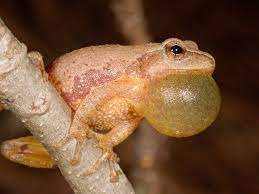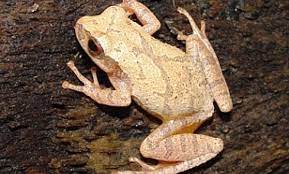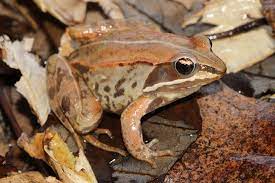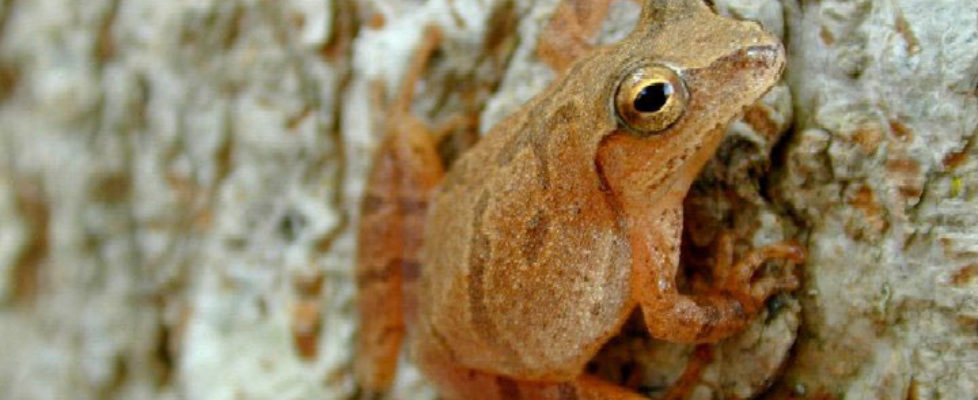The Song of the Pinkletink
Every year, there’s a certain day when I finally believe that spring is coming. It’s not necessarily on March 20th or 21st, whenever the calendar decrees the season has arrived. Nor is it that first warm day after a long winter, the time I spot the first hardy crocus, or even the first dawn that’s greeted by the songs of Robins, Cardinals, and other birds that have been silent—or absent—all winter.
No…that day comes the first time I walk in a local park and hear the Pinkletinks calling.
Or, as we know them, Spring Peepers (Pseudacris crucifer), the minuscule frogs whose calls fill the late-winter woods in our area. “Pinkletink” is what they’re affectionately known as on Martha’s Vineyard. (I suggest we appropriate this glorious name.)

The rhythmic, high-pitched Peeper chorus begins as early as late February in the Northeast, even before the skunk cabbage sends out its first shoots. It emanates from the hundreds of frogs that can gather in small ponds (frequently temporary ones created by melting ice and snow) and other wetlands. Here males call for mates, vying for the females who will choose them.
While I’ve enjoyed this chorus for many years, it wasn’t till this spring that I began to wonder: How can these tiny creatures be out and about when the snow has barely left the ground and temperatures at night still frequently fall below zero? After all, they’re as cold-blooded as any other amphibian and reptile, most of which don’t emerge till much later.
The answer is antifreeze. Like overwintering insects and seeds, Peepers produce chemicals called cryoprotectants—often glucose and glycerol, the same chemical we use to keep our cars from freezing. They allow the frogs to survive in leaf litter or under loose bark during the coldest months and become active again as soon as the weather thaws.
You might be able to spot a recently emerged Spring Peeper as it makes its way to a nearby pond. But you’d better have sharp eyes: Peepers reach no more than an inch and a half in length and weigh in at between a tenth and a fifth of an ounce. They’re brown or tan with a darker cross- or x-pattern on their backs. (It’s the cross that gives this species, its scientific name; crucifer means “cross-bearer.”)

Once the males reach a pond, they carve out a tiny territory and begin to sing. The result may seem like an undifferentiated wall of sound to us, but it’s actually just one part of a fascinating process.
Nearly always, three frogs whose territories adjoin sing in competition. The one with the deepest voice usually begins a round of calls, and the one with the loudest, most persistent sound (not always the same individual) is most likely to attract a female.
Yet this “survival of the loudest” process comes with one major complication: The territories of singing males are haunted by “satellite males.” These individuals don’t sing at all; instead, they hang around the periphery of the other males’ territories, hoping to intercept—and force themselves upon—females as they hop in to choose their mates. As many as 15% of all the males in an assemblage may be satellites, and they often succeed in their goal.

Studies have shown that these silent males are often smaller and less robust than the males they preempt. Therefore, they’d rarely be a female’s choice. Yet this widespread behavior seems to offer the whole species a surprising evolutionary benefit.
Spring Peeper populations have ebbed and flowed during the series of Ice Ages that swept across northern North America over the past two million years. At the depths of the freezes, the surviving populations have often become isolated from each other, sometimes for thousands of years. During these long separations, the species split into several different lineages, which scientists have been able to identify through DNA analysis.
With the retreat of the most recent Ice Age (about 18,000 years ago), separate Peeper lineages rejoined each other. These populations hadn’t diverged enough to form separate species, but even now they often feature significant differences in size and voice. Researchers have found that satellite males often originate from a different lineage than the predominant one in their area. Meanwhile, females prefer to stick with the males from their own original population.
When a smaller satellite male takes the place of the stronger one a female would have chosen, it would seem to directly challenge the evolutionary philosophy of “survival of the fittest.” The result, however, may bring greater diversity and strength to the species as a whole. Simply by increasing the gene pool, this mixing of lineages can help reduce the risk of harmful mutations, increased susceptibility to disease, and other threats common in populations that are inbred.
Regardless of her mate, a fertilized female typically produces about 900 eggs in a single clutch. These are hidden amid vegetation and leaf litter at the bottom of the pond, where they hatch in 6 to 12 days. Surprisingly, the tadpoles then take an unusually long time (as much as three months) before maturing into frogs. Every year, vast number of young Peepers perish when their temporary ponds dry up.
Even so—and despite the ongoing wetland pollution and development that have reduced their population in some places—Spring Peepers remain a common species in undisturbed and regenerating woodlands throughout our region. As long as we continue to give them the space they need, our noisy Pinkletinks should serve as an unmistakable harbinger of spring for a long time to come.
Copyright © 2021
By Joseph Wallace



